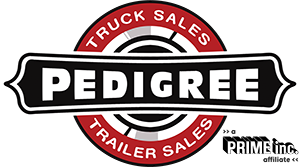Preventive maintenance (PM) means you are taking proactive steps to ensure your equipment is in top condition. As a fleet owner, preventive maintenance means you’ll spend more time on the road and less time in the shop.
Benefits of a Preventive Maintenance Program
Preventive maintenance (PM) means you are taking proactive steps to ensure your equipment is in top condition. As a fleet owner, preventive maintenance means you’ll spend more time on the road and less time in the shop.
Besides maximizing vehicle availability, there are many other benefits of preventive maintenance over a more reactive approach:
- Extend vehicle life span, which lowers replacement costs
- Limit excessive breakdowns which raise costs and lose revenue
- Fewer unexpected repairs to throw off your schedule and your budget
- Improved safety for drivers and everyone else on the road
- Protect against lawsuits in the event of a traffic accident
What Is the Right Semi Truck Fleet Maintenance Schedule?
Your owner’s manual will provide the manufacturer’s recommended service interval for each individual truck. But don’t stop there.
Some vehicles may need more frequent service appointments if they are frequently exposed to “severe” driving conditions, which includes extensive low-speed driving or long periods of idling. This is especially common with vehicles used for short deliveries, those with multiple drivers or those driven in off-road or dusty conditions.
Your maintenance schedule can be based on different thresholds:
- Time since the last appointment
- Mileage driven since the last appointment
- Engine hours between appointments
- Gallons of fuel used since the last appointment
During planned service, and OEM-certified professional will
identify signs of wear and tear early, when they’re both easier and cheaper to
fix.
What Maintenance Schedule is Recommended by the OEM?
Maintenance varies from truck to truck and the best source
of information is to consult directly with the OEM. We currently have Freightliner,
International, and Peterbilt trucks available.
Here are the OEM recommendations for each.
What Services are Included in a Semi-Truck Maintenance Appointment?
Every preventive maintenance appointment should include a thorough inspection to identify trouble spots in need of repair and worn-out parts that need replacing. Other services include lubrication, adjustment, and cleaning.
Your technician should address all of the following items:
|
|
Fleet Maintenance is a Team Sport
Seek input from drivers when setting priorities for individual vehicles, and work with your maintenance professional to create a service schedule that works for everyone.
In between service appointments, each driver must perform a daily inspection before driving. Daily inspections should include safety features, body condition, and issues in need of repair.
Some trucking firms will also hire an individual to coordinate preventive maintenance for the entire fleet, in conjunction with drivers and technicians.
Keep Detailed Fleet Maintenance Records
Each individual truck in your fleet should have its own maintenance and repair history included in your records.
Fleet management software can help you keep up with variables like mileage, prior maintenance and repairs, and maintenance budgeting. You should also be tracking parts, labor, and collisions and performing routine assessments of which vehicles cost the most to maintain.

We asked people around the trucking industry their best suggestions for a preventative maintenance program. Here’s what they had to say!
- Your tractor joints should be greased when you change the oil, but this should really be done every 35-38k miles. Greasing the joints at 20k miles is even better for your truck. You can get chassis lube and a grease gun to do it yourself. Trent Pharris, Prime Inc Road Assist Team
- Remember as you go into the winter months that fuel isn’t treated everywhere. To keep things from gelling up, you should be treating your tractor with Anti-Gel. Add it to your tanks and let it run through the reefer fuel lines for 2 hours. If your bunk heater stops working due to gelling up, you need to treat it with Diesel 911 at that point. That is a 4-5 hour process. Doug Tamm, Prime Inc. Road Assist
- Check your bunk heaters before winter weather arrives to make sure it is working. Joe G, Service Advisor Central Power Systems & Services
- I don’t see enough people checking fluids during their pre-trip. You should check the oil level, power steering, and AC coolant each time. Andre, Prime Driver since 2017
Pedigree Truck Sales Fleet Maintenance Program
Is it time to add more vehicles to your growing fleet? Contact Pedigree to learn about our wide inventory of quality pre-owned, fleet-maintained semi-trucks and trailers. Our inventory includes trucks from top brands like Freightliner and a variety of different trailer types including reefers, tankers, and flatbeds.

